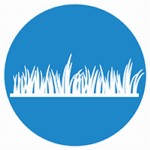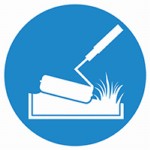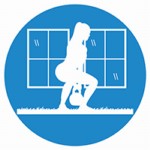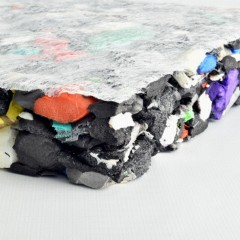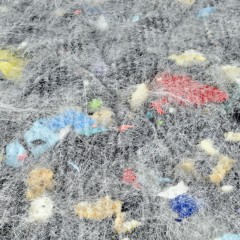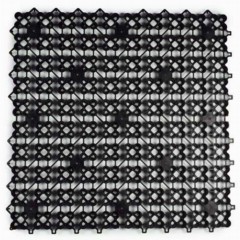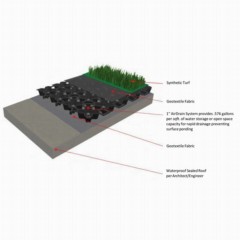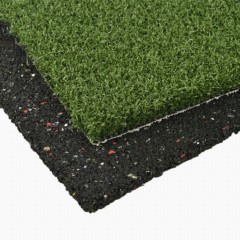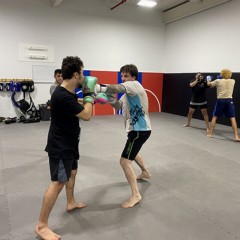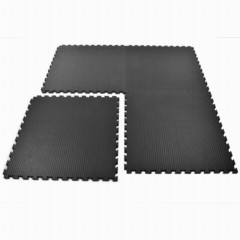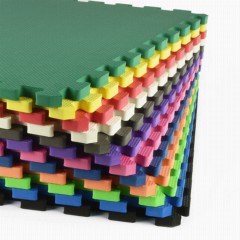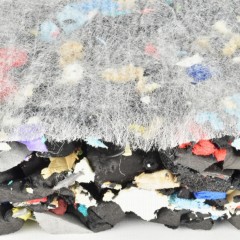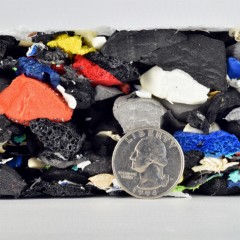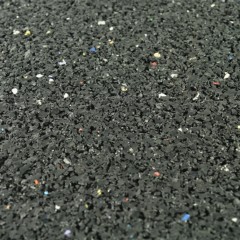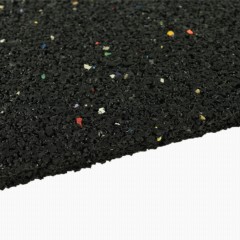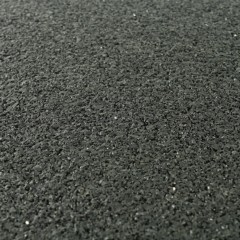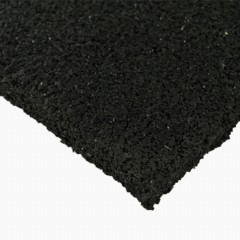Artificial Turf Underlayment Options
Laying a roll of artificial turf provides a lot of benefits, including delivering the appearance of natural grass without the maintenance work. No matter how lush and green the synthetic blades look, though, they don’t provide a lot of cushioning on their own when you’re placing the roll of turf over a hard surface like asphalt or a gym floor.
That’s where artificial turf underlayment enters the picture. Adding a sturdy drainage layer or a cushioned layer directly under the artificial grass makes the layout more comfortable and safer to use.
Whether you want a thick foam pad, perforated drainage tiles, or a thin rubber underlay, Greatmats has the products you can trust. With the right padding, your artificial grass layout will be far more comfortable than the real thing!
Types of Artificial Grass Underlayment
You can select among a few different products and materials with artificial grass underlayment from Greatmats.
Foam Pads
Foam pads offer the most cushioning among our artificial turf underlayment options. They measure between
1-1/4 and
2-1/4 inches in thickness. The thickest pads have an 8-foot fall-height rating for use under playground equipment.
Interlocking Foam Mats
Interlocking foam mats have a mix of cushion and firmness. These mats are easy to install, as they contain a puzzle-style edge. They measure between 5/8 of an inch and 1-1/4 inches in thickness.
Rubber Rolls
Rubber rolls deliver a durable, firm base with minimal cushioning. For layouts where a sure footing in the artificial grass is more important than delivering cushioning against falls, these rolls are ideal. They measure between
8 and
12 mm in thickness (or between 5/16 and 15/32 of an inch).
Plastic Drainage Tiles
Our
interlocking drainage tiles have no cushioning, as they consist of firm polypropylene plastic. However, they have perforations across the tile, allowing water to easily drain through the faux turf and tile to reach the ground underneath.
Benefits of Underlayment for Artificial Turf
Padding and underlayment for artificial turf will give you a few different benefits, including:
- Adding cushioning to the thin artificial turf backing
- Protection against falls
- Protection for lower body joints
- Varying thicknesses available
- Stands up to moisture exposure
- Works with almost any kind of turf
- Made for DIY installations
- Safe to use for various activities
Use Types for Artificial Turf Padding
You can use our artificial turf padding in a variety of situations, including:
- Outdoor playgrounds
- Indoor playgrounds
- Athletic facilities
- Indoor baseball and softball facilities
- Outdoor baseball and softball facilities
- Indoor soccer facilities
- Outdoor athletic facilities
- Areas that need improved drainage
- Pet areas
- Dog runs
- Dog agility and training facilities
- Gyms
- Backyard play areas
Many of our artificial turf underlayment products are reusable. If you replace a worn roll of turf, you may be able to keep the underlayment in place and roll the new synthetic turf over the top.
Artificial Turf Underlayment Q&A
Why use padding under playground turf?
Using padding under playground turf provides benefits like a cushioned surface in case kids fall while running and playing. You can adjust the thickness of the underlay pad to gain a higher level of safety and fall height rating.
What kind of padding do you put under gym turf?
The
best kind of padding to put under gym turf will consist of either foam or rubber. Both of these materials offer a little bit of cushioning for athletes compared to going over the top of a firm subsurface like concrete or asphalt. Having at least a little bit of cushion protects the athletes from potential joint and lower body injuries.
What can I put under artificial grass for drainage?
A synthetic lawn will allow rainwater to drain to a point, but you can improve the
drainage of artificial grass by adding an underlayment for artificial turf. Installing perforated drainage tiles that consist of firm plastic under the fake grass will help the water move toward the ground underneath without allowing it to pool directly under or on top of the turf.
